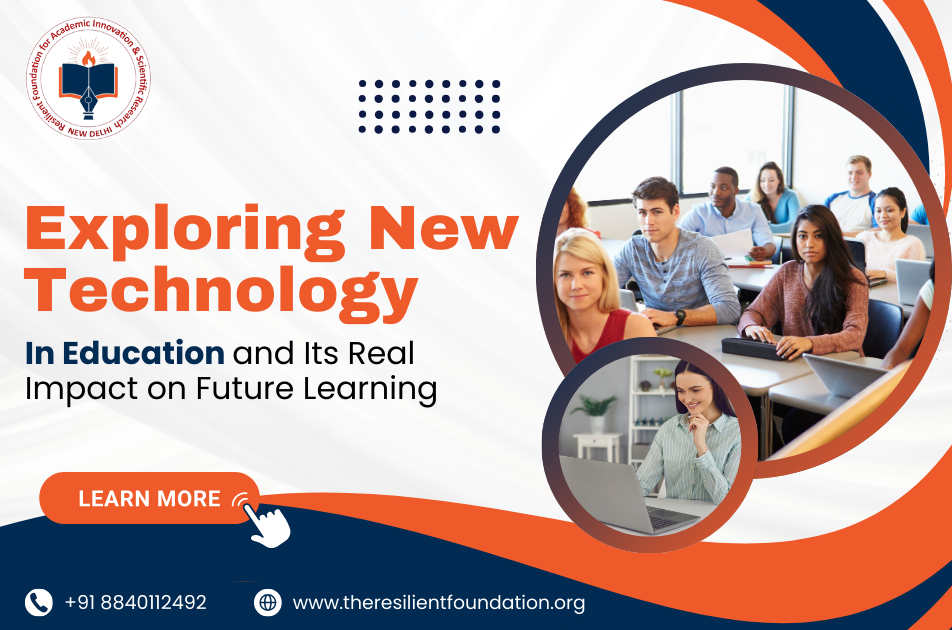Education has always been the key to growth, but new technology in education is making it more powerful than ever. Today’s classrooms look different from the past because digital tools, smart devices, and online systems are shaping how students learn and how teachers teach. This change is not only global but also reshaping the education system in India. Because of that, learners now get easy access to lessons, research, and collaboration with just a few clicks. In addition, researchers are seeing how education and new technologies together are creating opportunities that were once hard to imagine.
Understanding New Technology in Education
To fully see the value of new teaching technology, let’s break it down into simple points:
- Digital Classrooms: Online platforms and apps are helping students and teachers connect from anywhere. So, learning is no longer limited to a physical classroom.
- AI and Machine Learning: These systems help teachers analyse student performance and create better lesson plans. Because of that, learners get personalised support.
- Virtual Collaboration: Students can work with peers across the world, which means the education system in India is now more global than ever.
Clearly, new learning technologies are helping learners and educators move beyond old methods and into a smarter future.
Key Technologies Transforming Education
Specific tools and systems are shaping modern classrooms. Each plays a unique role in blending education and new technologies:
- Smart Boards and AR/VR: Teachers can now explain complex topics with visual simulations. So, even tough lessons become easy to understand.
- Cloud Computing: Research papers, projects, and data can be stored safely online. Therefore, students don’t have to worry about losing important work.
- Robotics and Coding Tools: Schools are encouraging students to learn programming early because this skill is vital in a career.
With these, new teaching technology is not just about tools but also about changing how knowledge is delivered and absorbed.
The Real Impact on Future Learning
The effect of new technology in education on future learning is deep. Here are the main points:
- Personalised Education: Every student learns at a different pace. Because of that, AI creates lesson plans based on personal needs.
- Affordable Options: Digital platforms reduce costs. If students can access materials online, it makes the education system in India more affordable.
- Research Growth: Advanced tools help researchers analyse data faster. Therefore, discoveries in education come quicker.
- Skill Development: With coding, robotics, and digital tools, students get skills that match real industry demands.
New learning technologies are not just an option but a necessity for the future.
A Fun Riddle for you
Here’s a riddle that fits the idea of new technology in education:
I speak without a mouth, and I teach without a class.
I hold endless lessons, yet I never pass.
What am I?
Answer: Online Learning Platform.
This riddle shows how education and new technologies together open doors for limitless opportunities.
Benefits of Using Technology in Education
The benefits of new teaching technology are wide. Below are key points that also connect with the mission of Resilient Foundation:
- Equal Learning Opportunities: Technology helps bridge the gap for students in rural and urban areas. Because of that, the education system in India becomes fairer.
- Better Student Engagement: Gamified lessons and smart visuals make classes more interesting. Also, students remember more when they enjoy learning.
- Support for Teachers: Tools help teachers reduce workload and focus more on guiding students. If teachers save time, they can put more energy into personal mentoring.
- Accessible Resources: Online libraries and e-books give everyone the same access to knowledge. Therefore, new learning technologies remove barriers.
- Promoting Innovation: By using digital tools, both students and teachers create new ways of problem-solving. So, the future workforce is stronger.
At Resilient Foundation, we believe technology can make education not only modern but also inclusive. We conduct training programs to help every researcher learn this new technology.

